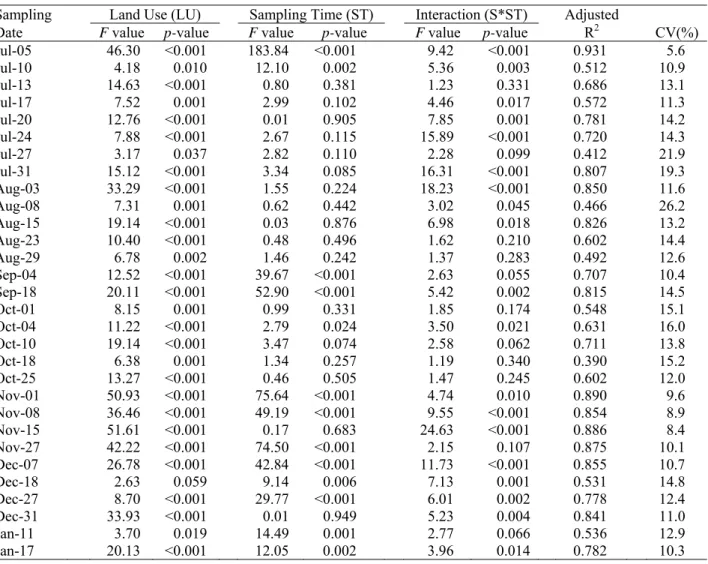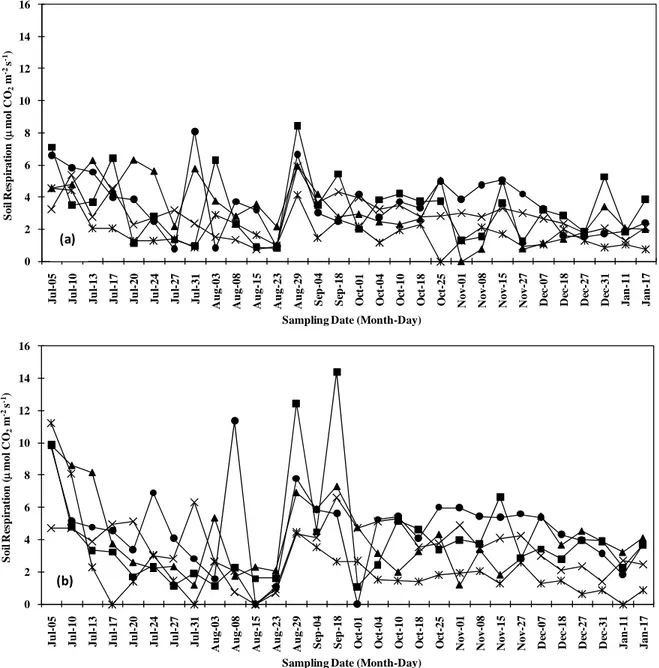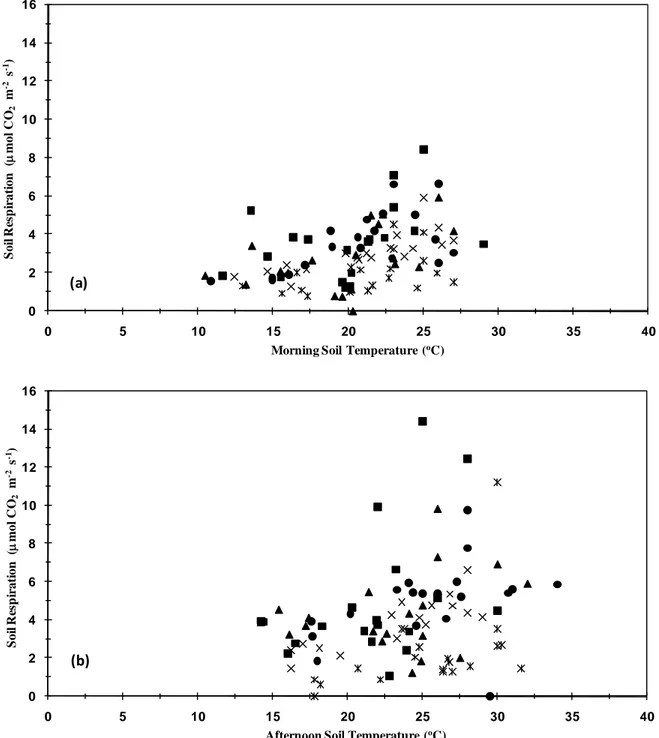CO2 Efflux in vertisol under different land use systems
Texto completo
Figure




Documento similar
Changes in soil bulk density, soil organic carbon and water holding capacity are analysed in soils currently tilled, and after five to fifteen years of abandonment in order to
studying the autocorrelation and partial correlation function for soil water content measured at a shallower depth as well as the cross-correlation function between soil water
217 The soil control variables used to provide SIDSS with relevant 218 information are matric potential ( W m ) and volumetric soil water 219 content ( h v ), which are common
Estimated critical soil water contents for reed growth dynamics and peat combustion risk in Las Tablas de Daimiel National Park (TDNP) undisturbed charophytes and peat
The five morphological properties of the soil (soil texture, soil structure type, dry consistence, biological activity and HCl reaction) in our empirical categorical
The selection included two supporting ecosystem properties (soil conditions, composed of soil formation and soil stability, and habitat quality), four regulating services
A decrease of bulk density in the top soil (< 10 cm) was found although for deeper layers, an increase was detected. This practice does not present important differences
Since forest variables (forest productivity and for- est biomass) and abiotic factors (climate variables, soil texture and nu- trients, and soil topography) were only calculated at




